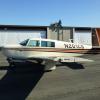Starting a New Arguement
-
Members Online
- Flyler
- Greg Ellis
- Rick Junkin
- Ragsf15e
- brownm
- AF M20J
- PT20J
- hazek
- Flash
- N201MKTurbo
- 00-Negative
- Skyland
- EricJ
- MDMooney
- Bob Weber
- Hank
- Wingover
- Jeff Uphoff
- GoDemonDeacons
- Scott Ashton
- NickG
- 47U
- Justin Schmidt
- DXB
- cemmett
- bencpeters
- TCC
- redbaron1982
- M20F
- Rwsavory
- Jake@BevanAviation
- Paul Thomas
- dzeleski


Recommended Posts
Join the conversation
You can post now and register later. If you have an account, sign in now to post with your account.